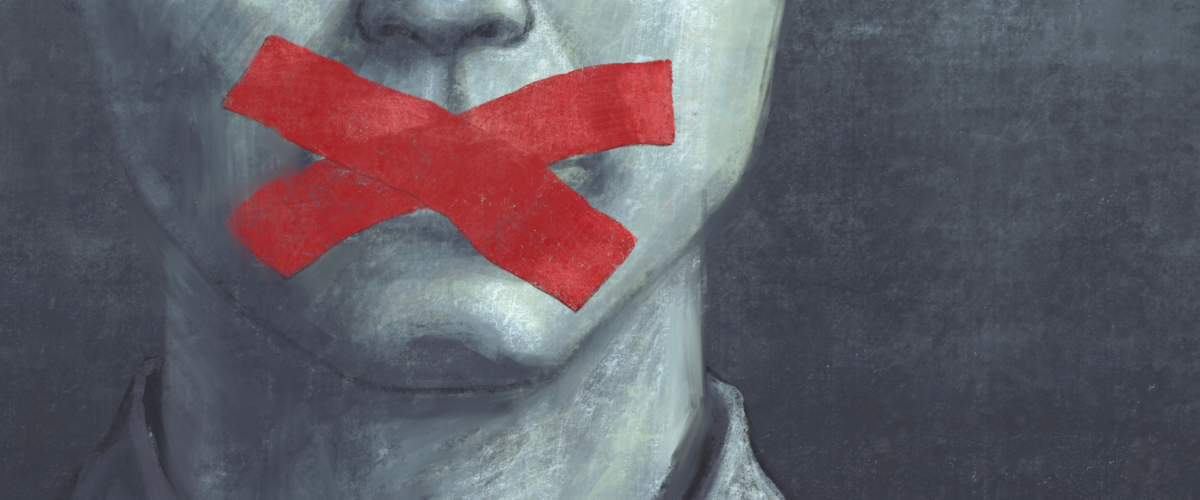This series analyses the changes proposed by the Criminal Law Bills in 2023. This article was first published as part of Project 39A’s Bharatiya Nyaya Sanhita Bill, 2023: A Substantive Analysis, a complete version of which can be accessed here.
This post analyses the replacement of ‘sedition’ with the newly inserted provision seeking to penalise acts endangering the sovereignty, unity and integrity of India.
Cl. 150 of the BNS seeks to criminalise ‘Acts endangering sovereignty, unity and integrity of India’ and punishes them with imprisonment for life or with imprisonment which may extend to seven years and fine. The minimum punishment for the offence has been increased from three years to seven years. The clause, it needs to be said, is in the same vein as s. 124A of the IPC. The provision may not be labelled ‘sedition’, but the spirit of that provision has been retained and potentially, covers a wider range of acts which themselves suffer from ambiguity and vagueness in their current form, creating implications for its constitutionality. A look at the journey and jurisprudence on sedition is a good place to reflect upon the implications for this clause.
In the recent past three noteworthy developments regarding the crime of sedition have taken place. First, the Supreme Court has placed s. 124A of the IPC in abeyance.[1] Second, the Law Commission of India in its 279th report recommended retaining the crime of sedition on the statute books.[2] Third, while introducing the new criminal law bills, the Home Minister proclaimed in the Lok Sabha that the crime of sedition has been done away with.[3]
Table 3 below compares the text of s. 124A IPC and Cl. 150 of BNS, and highlights the changes introduced in the BNS.
It may also be noted that s. 108 of the CrPC which provides for obtaining security for good behaviour from persons disseminating seditiousmatters has been substantially retained in Cl. 127 of the BNSS. Any publication punishable under Cl. 150, BNS is referred to as ‘seditious matter’ in Cl. 127, BNSS.[4] Therefore, while the word sedition has been removed in defining the offence in the BNS, the procedural law of the BNSS retains references to ‘seditious matter’. This indicates that despite changes in the wording of Cl. 150, it has essentially retained the crime of sedition[5] and raises concerns whether Cl. 150, BNS will continue to be interpreted in light of sedition.
While Cl. 150 has retained the modes of committing sedition, namely ‘by words…visible representation’, the prohibited actions have been replaced. In the IPC, s. 124A criminalises exciting or attempting to excite ‘hatred, contempt or disaffection towards the Government’ established by law. The BNS criminalises exciting or attempting to excite ‘secession, armed rebellion or subversive activities, or encouraging feelings of separatist activities that endanger the sovereignty or unity and integrity of India’. In addition to a change in the entity (‘government of India’ in s. 124A as opposed to ‘India’ in Cl. 150) which is the object of the provision and the expansion in the range of activities that could be considered as threatening the ‘unity and integrity’ of the country, the clause has also added new means of committing the offence by including ‘electronic communication’ and ‘financial means’, and the mens rea requirement of ‘purposely or knowingly’ committing such an act.
I. The vice of vagueness
Unlike the IPC, there are no explanations provided in Cl. 150 to indicate the meaning and scope of these terms. For instance, ‘subversive activities’, in the absence of a legal definition, indicates neither the nature of activity that may be termed ‘subversive’ nor the degree of harm that must occur nor the object of such harm to qualify as a subversive activity. For e.g., the Cambridge Dictionary defines ‘subversive’ as ‘trying to destroy or damage something, especially an established political system’. Oxford Languages defines ‘subversive’ as ‘seeking or intended to subvert an established system or institution’ and ‘subvert’ as ‘[to] undermine the power and authority of (an established system or institution).’ The standard is broad enough to include within its ambit legitimate protests and dissents against the government, as they are often directed at challenging the legitimacy and authority of decisions and actions taken by the government.
The lack of accompanying legal definitions in the BNS or other legislations therefore creates a risk of overbroad application, rendering the provision vague and arbitrary – grounds on which legal provisions have previously been struck down.[6] In Shreya Singhal v. Union of India,[7] the Supreme Court held s. 66A of the IT Act to be unconstitutional and one of the main grounds was that terms like ‘grossly offensive or of menacing character’, ‘annoyance’, ‘inconvenience’, ‘danger’, ‘enmity’, ‘hatred’, ‘ill will’, which were used to constitute the offence were vague and ambiguous, making the provision amenable to abuse by officials. Similarly, there is no clarity provided on what amount of financial support or what nature (whether direct or indirect) of financial contributions would amount to using ‘financial means’ to commit the offence.
The Explanation to the clause also appears to be incomplete, making it unclear. While it mentions certain acts and their purpose – comments expressing disapprobation of measures and actions of the Government[8] to alter them through lawful means – it does not indicate whether such acts are to be considered as offensive or if they lie outside the scope of this section and are not to be considered an offence. Thus, it does not capture the meaning of Explanation 3 to s. 124A, IPC that it is seemingly modelled on.
II. Vagueness in the object of harm
A significant departure in Cl. 150 is the lack of a discernible object of protection as identified in the IPC. The IPC requires exciting disaffection, hatred or contempt towards ‘the Government established by law in India’, whereas Cl. 150 mentions endangering the ‘sovereignty, or unity and integrity of India’. The former lends itself to conceptualising the government as an identified and separate entity whereas the latter expands the scope of offence because the nation is a necessarily abstract concept and does not lend itself to specificity. The term could refer to the government, public figures or even society and communities generally. Such ambiguous (and overbroad) delimitation of the object of harm impacts the threshold of harm required for an act to constitute sedition. The effect of such a departure from the IPC may be understood or even constrained by examining the judicially evolved standards in determining who may be said to constitute the ‘Government’ under s. 124A, IPC, which has in turn acted as a safeguard against an overbroad application of the provision.
In Kedar Nath Singh v. State of Bihar[9]the Supreme Court describes ‘Government established by law’ as the visible symbol of the State necessary for its continuity and stability and as different from individuals engaged in carrying on the tasks of the administration at the time. The existence of an exceptional provision like sedition was thus justified on two grounds – it delimited a specific object that needed protection and it indicated the level of harm that has to be inflicted to constitute sedition – that is, for an act to constitute sedition, it must threaten the continued existence of the State or its stability.
The impact of such clarity is seen in the judgment of State through Superintendent of Police, CBI/SIT v. Nalini and Ors[10] where the Supreme Court was interpreting s. 3 of the now repealed the TADA[11] which was a more stringent law and contained a similar object of harm – ‘Government as by law established’. The Court here held that the assassination of Rajiv Gandhi, former Prime Minister of India, did not amount to a terrorist act because he was not the sitting Prime Minister of the country and targeting him did not constitute an attempt to strike fear in the Government of the Centre or State.
In identifying ‘India’ as the object of harm and in failing to precisely define specific actions that constitute the offence, Cl. 150 creates a tenuous link between the act and its impact.
III. Criminalising dissent
The Supreme Court in Kedar Nath highlighted the important difference between disloyalty to the Government and strong criticism of its measures. The Court categorically held that the freedom of speech and expression under the Constitution (Art. 19(1)(a)) includes criticism or comment against the Government and its measures in the strongest words possible. The freedom exists as long as the act does not incite people to violence against the Government or intend to create public disorder. Freedom of speech was to be the norm and sedition the exception. The decision therefore clarified the scope of sedition with the aim to protect dissent from becoming a criminal offence. In Balwant Singh v. State of Punjab,[12] the accused raised slogans like ‘Khalistan Zindabad’ which is connected to a movement that seeks a separate State for Sikhs in India. The Supreme Court held that casual slogans raised without creating disturbance or inciting people to create disorder cannot by itself amount to sedition. While the Court has demonstrated a strong tendency towards protecting freedom of speech, whether this spirit and tendency has translated into practice is questionable.[13] Cl. 150 has the potential to further erode this protection. For instance, it is likely that the mere raising of slogans like the aforementioned one, without any incitement to violence or disorder, may be understood as a secessionist act or arousing feelings of separatist activities or subversive activity. Thus, the expansion of the spirit of sedition in Cl. 150 generalises a provision which is meant to operate in exceptional circumstances, and expands its scope beyond that of s. 124A as established by judicial precedents. This may raise concerns about the ability of the law to fulfil its intended purpose and distinguish between sedition and mere dissent.
IV. Lowered threshold of harm
Another concerning question raised by Cl. 150 is the status of safeguards which were judicially read into the definition of sedition. The need for the safeguards was the vague language of s. 124A, specifically the use of the words ‘hatred’, ‘contempt’, and ‘disaffection’. While on first glance, Cl. 150 might seem like a step towards certainty, it is necessary to understand the judicial evolution of safeguards regarding the offence of sedition before commenting so.
The words used in s. 124A, IPC lend themselves to multiple possible interpretations, and therefore to ambiguity and vagueness. This is evident from the conflicting interpretations of the section by the Federal Court in Niharendu Dutt Majumdar v. King Emperor,[14] which interpreted the terms ‘hatred’, ‘contempt’, and ‘disaffection’ narrowly to only include situations affecting public order, and several decisions of the Privy Council such as King-Emperor v. Sadashiv Narayan Bhalero,[15] which interpreted the same words broadly to include mere arousal of feelings even if they did not affect or tend to affect public order.
In Niharendu, the Courtexplained that sedition was criminalised to avoid anarchy, which the Court described as a situation where no respect is felt for the government and its laws, and they cease to be obeyed.The test laid down in Niharendu was ‘the acts or words complained of must either incite to disorder or must be such as to satisfy reasonable men that that is their intention or tendency.’ This judgment of the Federal Court was overruled by the Privy Council in Sadashiv, in favour of a literal reading of s. 124A that did not restrict the interpretation of the phrase ‘excite disaffection’ to exciting disorder but included within it hatred, enmity, dislike, hostility, contempt and every form of ill-will to the government. The standard in Sadashiv was lowered to ‘exciting’ certain bad feelings towards the government as opposed to Niharendu which required that the seditious act lead to, or tend or intend to lead to, public disorder or violence. It was further observed in Sadashiv that there was no intensity threshold for the feelings aroused either.
The question was finally decided by the Supreme Court in Kedar Nath where it preferred the test laid down in Niharendu, and therefore restricted the application of s. 124A. Therefore, any claim that Cl. 150 introduces certainty by using concrete expressions is misleading as the judiciary has interpreted s. 124A narrowly. It remains unclear whether the standard of affecting public order will be imported to the new offence or whether the standards mentioned in the section will apply literally. The existing language in the IPC, which was restrictively interpreted in Kedar Nath, has been completely replaced. The words ‘hatred’, ‘contempt’, and ‘disaffection’ are nowhere to be found in Cl. 150 of the BNS.
Notably, one of the main arguments raised by the petitioners in the ongoing challenge in the Supreme Court[16] is the vagueness and subjectiveness of the standard of ‘tendency or intention to create public disorder’, which was held to be the gist of the offence in Kedar Nath. Cl. 150 arguably introduces even more vague thresholds such as ‘excites or attempts to excite subversive activities’ and ‘encouraging feelings of separatist activities’. Neither does the section define the terms nor is there any judicial guidance on their interpretation. The vagueness as well as the lowered threshold brought in by these terms makes the clause constitutionally suspect.
Further, Cl. 150 specifically criminalises acts which encourage feelings of separatist activities. Kedar Nath specifically held that criminalising mere raising of feelings of hatred, enmity, dislike, hostility, contempt and other forms of ill-will towards the government would be an unreasonable restriction on the freedom of speech. While the exact feelings, the arousal of which is criminalised, are different, it remains to be seen whether the spirit in which Kedar Nath approaches sedition will continue to govern the application of Cl. 150.
The judicial guidance that had evolved with reference to the crime of sedition developed with a view to safeguard the freedom of speech and expression and to balance it against public order in a manner that was acceptable for a democratic State. This guidance is nowhere to be found in Cl. 150 of the BNS. It is as vague as s. 124A originally was, if not more. The lack of legislatively provided definitions in the BNS indicates a need for fresh judicial intervention which would necessarily involve reinventing the wheel. In the meantime, before clarity is read into the provision, it will be open to abuse. In fact, commentators have indicated that Cl. 150 of the BNS is even more subjective and prone to abuse than s. 124A.[17] The clause has the potential to criminalise dissent and is therefore antithetical to the democratic ideals of the constitution.
Sedition, as it exists in s. 124A, has seen an increase in use in the recent years (before the Supreme Court’s abeyance order) through targeting of social media posts, and has been used as a tool to quell protests. Cl. 150 of the BNS seems to be poised to continue this legacy instead of offering a break from its colonial past.
V. Mens rea
It is to be considered whether the mens rea requirement through the use of the words ‘purposely or knowingly’ in Cl. 150 can be seen as an improvement compared to s. 124A IPC. It would be erroneous to argue that s. 124A did not contain a mens rea requirement. Even though the provision does not use intention or knowledge (or any variations of it), s. 124A cannot be said to be a strict liability offence. The Supreme Court’s case law has been clear that “in the absence of any ostensible public purpose or necessary implication from the statute, it is a sound rule of construction adopted in England – and accepted in India – to construe a provision creating an offence in conformity with common law. Mens rea by implication must be excluded only where it is absolutely clear that implementation of the object of the statute would otherwise be defeated”.[18]Even going as far back as Ravule Hariprasad Rao v. State[19] and State of Maharashtra v. MH George,[20] it has been held that where an offence is created by a statute, however comprehensive and unqualified the language of the statute, it is usually understood as silently requiring that the element of mens rea should be imported into the definition of the crime, unless a contrary intention is expressed or implied. From this position of law it is evident that merely introducing the words ‘purposely or knowingly’ cannot be seen as an improvement on s.124A. Mens rea was always a requirement under s.124A and this is made evident in Kedar Nath.[21]
Comparison between s. 124A, IPC and Cl. 150, BNS
| S. 124A, IPC – Sedition | Cl. 150, BNS – Acts endangering sovereignty, unity and integrity of India |
| Whoever by words, either spoken or written, or by signs, or by visible representation, or otherwise, brings or attempts to bring into hatred or contempt, or excites or attempts to excite disaffection towards, 2*** the Government established by law in 3[India], 4*** shall be punished with 5[imprisonment for life], to which fine may be added, or with imprisonment which may extend to three years, to which fine may be added, or with fine. Explanation 1.– The expression “disaffection” includes disloyalty and all feelings of enmity. Explanation 2.–Comments expressing disapprobation of the measures of the Government with a view to obtain their alteration by lawful means, without exciting or attempting to excite hatred, contempt or disaffection, do not constitute an offence under this section. Explanation 3.–Comments expressing disapprobation of the administrative or other action of the Government without exciting or attempting to excite hatred, contempt or disaffection, do not constitute an offence under this section. | Whoever, purposely or knowingly, by words, either spoken or written, or by signs, or by visible representation, or by electronic communication or by use of financial mean, or otherwise, excites or attempts to excite, secession or armed rebellion or subversive activities, or encourages feelings of separatist activities or endangers sovereignty or unity and integrity of India; or indulges in or commits any such act shall be punished with imprisonment for life or with imprisonment which may extend to seven years and shall also be liable to fine. Explanation.––Comments expressing disapprobation of the measures, or administrative or other action of the Government with a view to obtain their alteration by lawful means without exciting or attempting to excite the activities referred to in this section. |
[1] S.G. Vombatkere v Union of India, WP(C) 682/2021 order on 11 May 2022 (Supreme Court): “We hope and expect that the State and Central Governments will restrain from registering any FIR, continuing any investigation or taking any coercive measures by invoking s. 124A of IPC while the aforesaid provision of law is under consideration.’ From order dated 31 October 2022 it emerges that the Attorney General also assured the Supreme Court that the Central Government is reconsidering the law regarding sedition and will abide by the 11 May 2022 order of the Supreme Court”, last accessed 30.08.2023.
[2] Law Commission of India, ‘Usage of the Law of Sedition’ (Law Commission of India Report No. 279, 2023).
[3] PIB Delhi, ‘Union Home Minister and Minister of Cooperation, Shri Amit Shah introduces the Bhartiya Nyaya Sanhita Bill 2023, the Bharatiya Nagarik Suraksha Sanhita Bill, 2023 and the Bharatiya Sakshya Bill, 2023 in the Lok Sabha, today’ (Press Information Bureau, 11 August 2023), <https://pib.gov.in/PressReleseDetail.aspx?PRID=1947941>, last accessed 28.08.2023.
[4] Cl. 127, BNSS.
[5] For this reason, the offence described in Cl. 150, BNS continues to be referred to as ‘sedition’ in this research brief.
[6] Maneka Gandhi v. Union of India (1978) 1 SCC 248; Shreya Singhal v. Union of India (2015) 5 SCC 1; State Of Bombay & Anr. v. F.N. Balsara 1951 SCC 860; Chintaman Rao v. State of Madhya Pradesh AIR 1951 SC 118.
[7] (2015) 5 SCC 1.
[8] The reference to the ‘Government’ in the explanation is also significant considering the fact that Cl. 150, BNS has otherwise omitted reference to the ‘Government established by law’ as the object of protection, as was done in s. 124A, IPC. Instead Cl. 150 refers to ‘India’ as the object of protection.
[9] 1962 SCC OnLine SC 6.
[10] (1999) 5 SCC 253.
[12](1995) 3 SCC 214.
[13] Article 14, ‘A Decade of Darkness: The Story of Sedition in India’, last accessed 28.08.2023.
[14] 1942 SCC OnLine FC 5.
[15] 1947 SCC OnLine PC 9.
[16] Tamine Kishore, Petitioner’s Submissions in Kishorechandra Wangkhemcha v. Union of India, <https://www.scobserver.in/wp-content/uploads/2021/09/Kishore_Wangkhemcha_v._Union_of_India1.pdf>, last accessed on 28.08.2023 ; Aparna Bhat, Petitioner’s Submission in People’s Union for Civil Liberties v. Union of India, <https://www.scobserver.in/wp-content/uploads/2021/09/Sedition_WritPetition_PUCL.pdf>, last accessed on 28.08.2023.
[17] PTI, ‘Bharatiya Nyaya Sanhita Bill allows using draconian police powers for political ends: Kapil Sibal’ (The Hindu, 12 August 2023), last accessed on 28.08.2023; Lubhayathi Rangarajan, ‘Home Minister Amit Shah Says Sedition Is Dead. But Its Replacement Is More Fearsome Than The Colonial Law Ever Was’ (Article 14, 14 August 2023), last accessed 28.08.2023; Chitranshul Sinha, ‘Sedition law is not gone, it’s set to be more draconian’ (Indian Express, 12 August 2023),last accessed on 29.08.2023.
[18] Union of India v. Ganpati Dealcom Private Ltd (2023) 3 SCC 315.
[19] 1951 SCC 241.
[20] (1965) 1 SCR 123.
[21] 1962 SCC OnLine SC 6, para 26.
.





